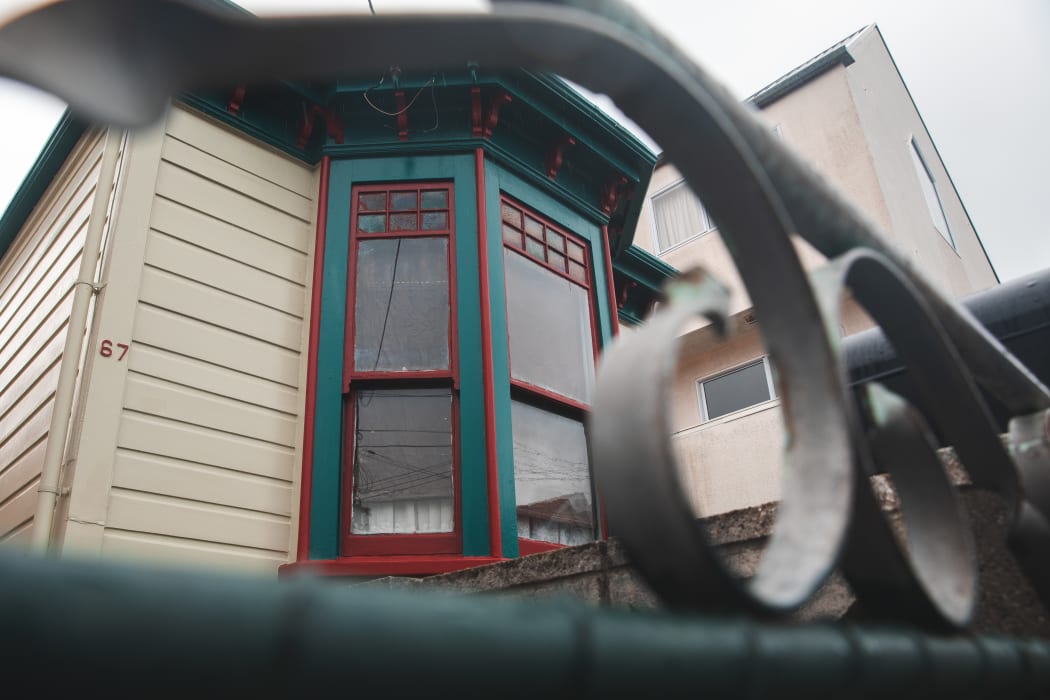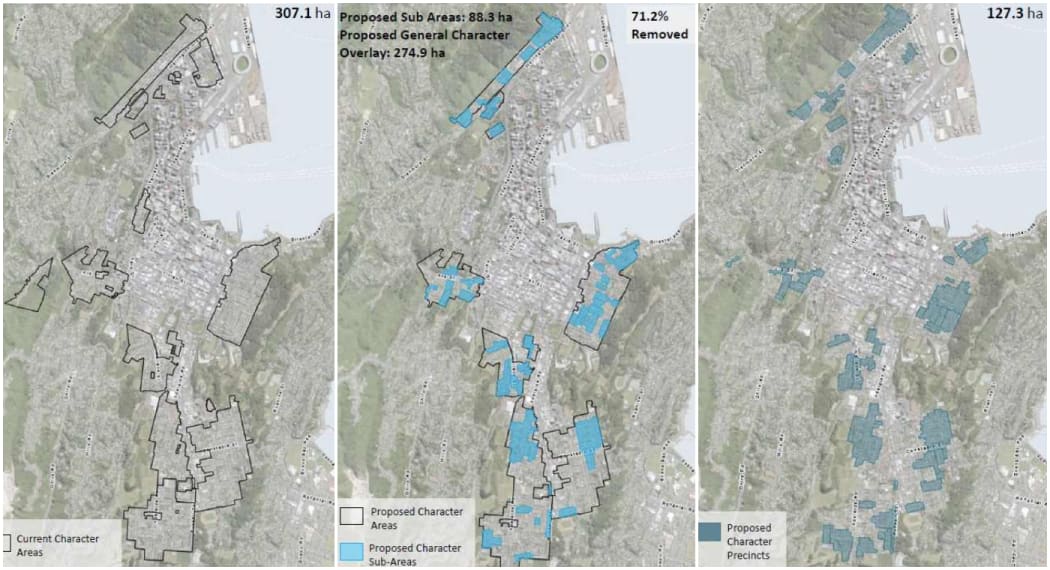Special character areas are the big winner in Wellington's newest version of its Spatial Plan, the zoning document which dictates to developers what they can build and where.

A house in Mt Victoria, Wellington. Photo: RNZ / Samuel Rillstone
The areas - which are selected for their heritage and architectural values - faced a dramatic downsizing in the Spatial Plan's first iteration.
The current plan has more than 300 hectares of character areas, which are afforded special protections for the buildings inside the areas, making demolition difficult. Any new buildings going up are required to fit in with the architectural style.
With the capital's population forecast to increase substantially, the initial version of the Spatial Plan proposed to allow for higher-density developments across suburbs.
Instead of expanding out, it looked at expanding up.
As part of that, it proposed reducing the size of the character areas by more than 70 percent, down to just 88 hectares.
But the move to downscale character areas was criticised by those who wanted to preserve the heritage, historical and architectural values of some suburbs such as Mount Victoria or Thorndon.
On Tuesday, Mayor Andy Foster indicated there were some substantial changes being made to the Spatial Plan.
That has been confirmed today.
In its newest version, the size of the character areas when compared with the draft version will be 70 percent greater, expanding the character areas back up to 127 hectares.
In its newest version which will be published today, the Spatial Plan rows back on the move, expanding the character areas.
However, character areas will still be reduced by about 60 percent compared to now.
It will come as a disappointment to a large number of people who argued the character areas hindered development, and will keep many locked out of housing.
"We have to take big steps to increasing housing provision," Councillor Iona Pannett, chair of Pūroro Āmua - the Council's Planning and Environment Committee, said.
"Otherwise young people will increasingly choose other towns and cities because Wellington is unaffordable. This trend presents a real risk to the future of our city and region."
While the size of the character areas has been increased, the 'general character overlay' - which placed certain size limits on buildings right next to character areas - will be removed.
This will mean larger developments will now be able to take place adjacent to where character areas are situated.
There is still the potential for further changes to be made, with the new plan coming to councillors next Thursday, where there is a strong change further amendments will be tabled.

From left: Existing character areas in Wellington; the original draft Spatial Plan downsizing the areas; the latest version with 127ha of character areas. Photo: Wellington City Council
Foster said the council needed to find the balance between both those who wanted to preserve heritage and those who saw it as a road-block to densification.
He said it would be the central city areas who would bear the brunt of development in the short term.
"Together, they are expected to accommodate another 29,000 to 33,000 people - or 12,000 to 14,000 more homes.
"They generally have larger sites for redevelopment and have good transport, services, amenities, and facilities.
"We will continue to engage with government to ensure that issues around insurance and resilience are addressed."
However the balance is achieved longer-term, data showed more than 30,000 new homes would ill be needed if the capital's population does grow by 80,000 people.
A new report recently showed the [https://www.rnz.co.nz/news/national/444841/leaked-report-on-leaky-infrastructure-cost-to-fix-wellington-water-revealed
huge cost of fixing up water infrastructure] to cope with Wellington's growing population.
In Thorndon, where it is priciest, the upgrade to water infrastructure was going to cost more than $500,000 for every new dwelling.
Other changes in the new plan:
- A new city goal, Partnership with Mana Whenua, has been added
- Changes to the walking catchments around main transport hubs such as Johnsonville
- Addition of five new "Opportunity Sites" for strategic development opportunities
- Height controls completely removed from the central city.
'Prioritising aesthetic value over wellbeing of people'
Advocacy group A City for People spokesperson Eleanor West told Afternoons the new plan focusing more on character areas was no good.
"We're gutted. The spatial plan that went out to consultation last year ... was a good plan, it struck a good balance between protecting the history of our city while also making space allowing the demolition of poor quality mouldy homes that are making people sick.
"We have a housing crisis."
West said that plan allowed for more housing and feedback from the public was split.
"Now what we're seeing is that the council officers have taken that feedback and come down on the side of character preservation.
The new draft plan means "they are increasing the parts of the city where you need a resource consent to demolish a house".
She said it could cost hundreds of thousands of dollars and it was preventing development in the city "in the name of protecting character".
"Getting consent to demolish something is just over the top ... especially [for] some of these homes, they're falling apart."
"I definitely support protecting well-maintained parts of that heritage of our city. What they're proposing to do now is taking that preservation way too far.
"They are prioritising aesthetic value over the wellbeing of people who need homes.
She said most of the people who supported the development were younger. And that was down to not having the privilege of owning a home.
She said the older generation had more sway in council's decision, adding that council would not be able to hear from people who were working two jobs to keep a roof over their heads or from people living in cars.
"I do think that council officers who are proposing this new draft spatial plan with extra character protections, it feels to me, like they are making a political decision and trying to find a compromise.
"Whereas it is their role as council staffers to present the best possible plan for our city that enables enough space for growth, it protects things people care about and it prioritises everyone's wellbeing."
She said that compromise was a job for the councillors, and not council staffers.






